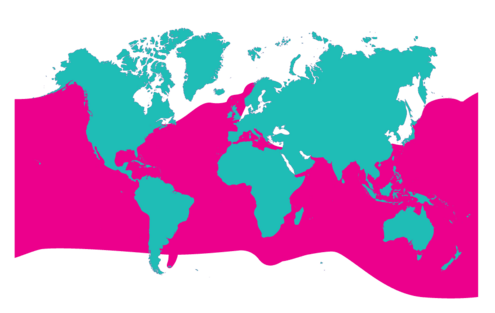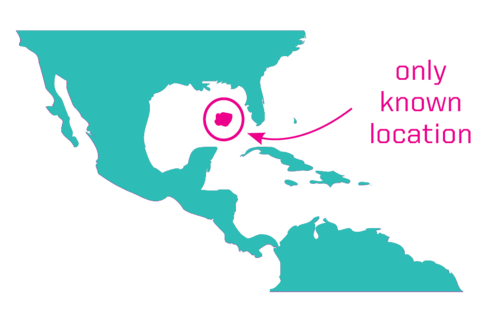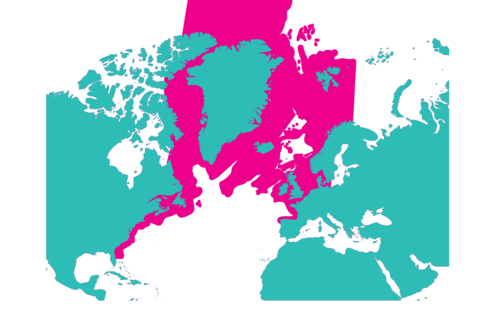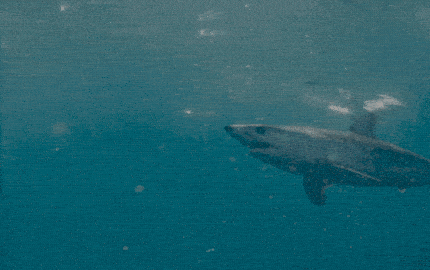
Sharks, rays, and skates are everywhere!
Their diverse body shapes and feeding styles help them thrive all over Earth, from arctic waters to coral reefs and from the deep sea to freshwater rivers.
There are many different groups of these fabulous fishes, and scientists are still finding new species. Despite their fierce reputation, almost all are harmless to humans. In fact, humans pose a bigger threat to sharks, through climate change, pollution, and fishing. About half of all sharks are killed as bycatch in nets and fishing lines meant for other species.
Wanna know more about a fish? Click on it!
NOTE: PHOTOS ON THIS PAGE ARE NOT TO SCALE
JUMP TO: dogfish sharks | carpet sharks | angel sharks | mackerel sharks | bullhead sharks | sawsharks | bramble sharks | cow & frill sharks | skates | stingrays | electric rays | guitarfishes & sawfishes | chimaeras | extinct
GROUND SHARKS
The ground sharks include species as different as hammerheads, fluorescent catsharks, and powerful tiger sharks. It is the largest order of sharks.
Number of living species: more than 292
DOGFISH SHARKS
Many species of dogfish sharks mostly live in the deep sea and are harmless to humans. They range in size from small bioluminescent lantern sharks to large, slow-moving sleeper sharks.
Number of living species: more than 137
CARPET SHARKS
Carpet sharks get their name from the fancy patterns on the skin of many species. The patterns help many of them hide in the reefs or tropical seas where they live.
Number of living species: more than 45
ANGEL SHARKS
Angel sharks have wide pectoral and pelvic fins that look like angel wings. The fins help them hide on the seafloor, where they wait for prey.
Number of living species: more than 25
MACKEREL SHARKS
When most people think of a shark, it might be a mackerel shark. This group includes well-known giants like the great white shark and the basking shark, as well as the speedy mako and thresher sharks.
Number of living species: more than 16
BULLHEAD SHARKS
Bullhead sharks get their name from the ridge above their eyes. They live in rocky reefs in the Pacific and Indian Oceans.
Number of living species: at least 10
SAWSHARKS
Sawsharks get their name from their long snouts, which have teeth sticking out at the sides. They use their snouts and teeth to slash prey. Don't confuse saw sharks with sawfish! Those are rays.
Number of living species: at least 10
BRAMBLE SHARKS
Bramble sharks live near the bottom of the ocean. Scientists think they eat by suddenly expanding their mouths and throats. That lets them suck in fish like a vacuum cleaner.
Number of living species: at least three
COW AND FRILL SHARKS
Cow sharks and frill sharks have more gills than usual—six or seven pairs instead of five. Frill sharks have frilly skin around their gills.
Number of living species: five cow sharks and two frill sharks

The flattened body shape of skates and rays makes them look like underwater kites. Their shape is well suited to living on the seafloor, although some rays live in the open ocean. Unlike sharks, skates and rays move by waving their pectoral fins.
SKATES
Skates have small, pointy teeth and short, stubby tails that are lined with thorny bumps. They reproduce by laying eggs in leathery cases.
Number of living species: more than 300
STINGRAYS
Stingrays get their name from the venomous spines on their long, whiplike tails. They are not aggressive, but they may try to protect themselves if stepped on. Stingrays give birth to live young.
Number of living species: more than 245
ELECTRIC RAYS
Electric rays have large organs on each side of their head that deliver electric shocks. They use them to hunt and to defend themselves.
Number of living species: more than 71
GUITARFISHES AND SAWFISHES
Sawfishes look like a combination of a ray and a shark, whereas guitarfishes, with their flattened heads and expanded pectoral and pelvic fins, look like rays. Like sawsharks, sawfishes have long snouts with teeth sticking out at the sides. Guitarfishes have shovel-like snouts and are often called shovelnose rays. Because both groups are types of rays, their gills are on their underside. Nearly all species of both groups are critically endangered or endangered.
Number of living species: 5 sawfishes and more than 35 guitarfishes

With huge heads and plate-shaped teeth for grinding food, chimaeras can be goofy looking. Their big eyes help them see in the ocean depths where they live.
Number of living species: more than 52

Scientists have identified thousands of species of extinct sharks. Earth’s extinction events wiped out many shark species. Diverse new ones evolved from the survivors. There’s a lot we don’t know about extinct sharks and their relatives. Because their skeletons were made of cartilage, not bone, they didn’t leave many body fossils behind. Most of what remains are teeth. Many, many teeth. Like the 7-inch (18 cm) teeth of megalodon. Here’s what we do know about a few gripping species.
Image Credits:
smooth hammerhead silhouette, The Natural History Museum, London/Science Source; smooth hammerhead, Shutterstock; bull shark silhouette, M. Shanley/© AMNH; bull shark swimming, Discovery Access; blue shark silhouette, M. Shanley/© AMNH; blue shark swimming, Klemens Gans/Bluewater Fascination; swell shark silhouette, Norbert Wu/Minden Pictures; swell shark underwater, Dave Lieberman/Diving Catalina; tiger shark silhouette, Fred Bavendam/Minden Pictures; tiger shark swimming, SCUBAZOO/NatureFootag; spiny dogfish silhouette, M. Shanley/© AMNH; spiny dogfish, Shutterstock; cookiecutter shark silhouette, M. Shanley/© AMNH; cookie cutter shark teeth, David Doubilet; American pocket shark silhouette, J. Wicker, NOAA/NMFS/SEFSC/Miami Laboratory; American pocket shark, Pally/Alamy; Greenland shark silhouette, Saul Gonor/NHPA/AGE Fotostock; Greenland shark swimming, NOAA; tasselled wobbegong silhouette, Manfred Bail/ImageBroker/AGE Fotostock; tasselled wobbegong, Elias Levy; whale shark silhouette, Zac Wolf; whale shark swimming, Discovery Access; nurse shark silhouette, M. Shanley/© AMNH; nurse shark swimming, Discovery Access; epaulette shark silhouette, Illustration by Zhao Chuang; Courtesy of PNSO PTE. LTD; epaulette shark walking, Plankton Productions Pty Ltd./NatureFootage; Pacific angel shark silhouette, BluePlanetArchive/Phillip Colla; Pacific angel shark swimming, Walter Marti/NatureFootage; great white shark silhouette, Nature Picture Library/Alamy; great white shark swimming, Common Flat Project LLC; goblin shark silhouette, M. Shanley/© AMNH; goblin shark biting, USFWS; shortfin mako shark silhouette, M. Shanley/© AMNH; shortfin makos shark swimming, Andy Brandy Casagrande IV/NatureFootage; Port Jackson shark silhouette, Blue Planet Archive/Nigel Marsh; Port Jackson shark, BluePlanetArchive/Andy Murch; shortnose sawshark, Andrew DeWater; bramble shark, Museums Victoria/CC BY-NC; sharpnose sevengill shark, Kelvin Aitken/VWPics/Alamy; frilled shark silhouette, M. Shanley/© AMNH; frilled shark close-up, © Citron/CC BY-SA 3.0; Pacific white skate silhouette, MBARI; Pacific white skate, Fisheries and Oceans Canada/CC BY-NC; southern stingray silhouette, M. Shanley/© AMNH; southern stingray, BluePlanetArchive/Phillip Colla; Atlantic torpedo ray, Fred Bavendam/Minden Pictures; bowmouth guitarfish, Blue Planet Archive/Alamy; Pacific spookfish silhouette, M. Shanley/© AMNH; Pacific spookfish, Kelvin Aitken/VWPics/Alamy; rabbitfish silhouette, M. Shanley/© AMNH; rabbitfish swimming, NOAA; Doliodus fossil, J. Maisey/© AMNH; Doliodus artist rendering, Illustration by Zhao Chuang; Courtesy of PNSO PTE. LTD; megalodon fossil, M. Shanley/© AMNH; megalodon model, M. Shanley/© AMNH; Helicoprion fossil, D. Finnin/© AMNH; helicoprion artist rendering, Illustration by Zhao Chuang; Courtesy of PNSO PTE. LTD.




 Biodiversity
Biodiversity
 Brain
Brain
 Genetics
Genetics
 Marine BiOLogy
Marine BiOLogy
 MicrobiOLogy
MicrobiOLogy
 PaleontOLogy
PaleontOLogy
 ZoOLogy
ZoOLogy
 AnthropOLogy
AnthropOLogy
 ArchaeOLogy
ArchaeOLogy
 Astronomy
Astronomy
 Climate Change
Climate Change
 Earth
Earth
 Physics
Physics
 Water
Water























































































